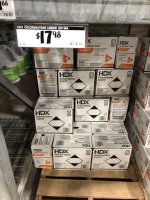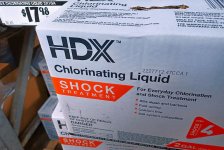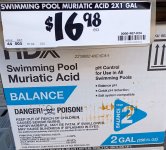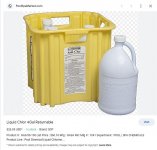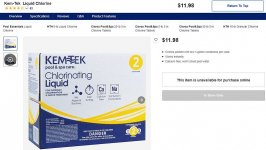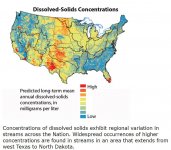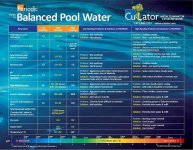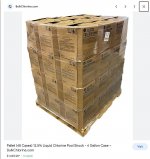Yeah, rereading my post, I kinda gave the wrong impression - trying to do two things at onceGuesstimates make things screwy.
$3.77 (steal of a deal price) per gallon of 12% equals $0.78 per FC for your 25k gallons.
That is both stronger and cheaper than most will find, and it's still 50% more than an IC40 over its lifespan.
I went IC40 for you with a short and easy UV season up north. $1500 for the complete system will get 2791 FCs lifetime in 25k gallons. $0.53 each.
If you pay someone $500 to install it, it's $0.71 per FC for the first unit, which is still cheaper than your steal of a deal liquid shock. Future cells would be minus the install fee, and controller fee, and very much in your favor.
Put another way, each gallon of 12% gets you 4.8 ppms. And IC40 is equivalent to 581 gallons, which would cost you $2192 at the steal price.
*not lugging 581 jugs......PRICELESS
What I meant to say was even at such a low price for Liquid Chlorine (under $4/gal for 12%), a SWCG would still end up being cheaper than I'm currently paying, even allowing for a new pump and replacement cells (which are barely more than I pay for one season's worth of LC).
If I was paying twice as much for my Chlorine, the math only favors the SWCG more and more.
However, hard to throw $3k at the pool this spring when I just threw $15k at the roof...and carrying those jugs is about all the excercise I get !!


